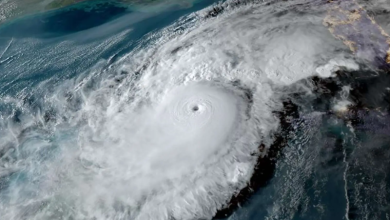Winterless Reality, Greece’s Olive Groves Grapple with Climate Crisis.

In the sun-drenched landscape of Polygyros, northern Greece, where ancient olive trees have stood resilient for centuries, a looming threat has descended. Climate change, manifesting as the absence of a profound winter, is now casting a shadow over the renowned Greek olive crop.
Weathering the Storm:
Zaharoula Vassilaki, a seasoned organic farmer, gazes with awe at a colossal olive tree on her property, a resilient veteran weathering both time and a direct lightning strike. Yet, the changing climate, characterized by the conspicuous absence of a robust winter, proves to be a formidable adversary even for this ancient guardian. “We no longer have winter at all,” laments Vassilaki, highlighting the significant alterations in weather patterns.
Temperature Troubles:
In mid-November, the Halkidiki region experienced temperatures exceeding 15 degrees Celsius, a departure from the norm. Nikos Anoixas, a board member of Doepel, the Greek national interprofessional organization for table olives, identifies climate change as the predominant challenge of the season. The uncharacteristic warmth jeopardizes olive production, and fears mount for the coming year mirroring the current climatic abnormalities.
Crisis in the Grove:
Vangelis Evangelinos, a lifelong cultivator of edible olives in Halkidiki, recounts unprecedented weather conditions and a dismal crop, an experience foreign even to the seasoned farmer. The warm weather has impacted approximately six million trees in the region, leading to what experts describe as an intense phenomenon of ‘fruitlessness’ over the past five years.
Echoes Across Europe:
The repercussions extend beyond Greece, resonating in the European Union’s olive production powerhouses, Italy and Spain. Both nations grapple with similar challenges, causing a surge in olive oil prices. Spain, the world’s leading producer, faced a particularly difficult year in 2022, exacerbated by ongoing drought. Italy, too, estimates an 80 percent decline in this year’s olive harvest.
Read More: Lamont-Doherty’s Mud Library and Earth’s Climate Tale
The old growers in Halkidiki stress the importance of winter for the trees to rest, a critical factor for later yields. Agronomist Athanassios Molassiotis, overseeing the arboriculture lab at Aristotelio University, details a two-degree rise in temperatures, impacting olive buds that traditionally rely on cold winters for fruit-bearing.
Halkidiki, responsible for half of Greece’s edible table olives, faces an economic downturn. The local chamber of commerce reveals that the crop shortage has, in some cases, exceeded a staggering 90 percent, resulting in substantial financial losses. Growers, facing depleted harvests, question the viability of investing effort into what has become an increasingly challenging endeavor.
Looking Ahead To Change:
Foreseeing an ominous future, chamber president Yiannis Koufidis anticipates worsening conditions, emphasizing the enormous economic losses suffered by growers. The local olive processing unit reports a production decrease of at least 60 percent, painting a grim picture for an industry deeply rooted in the region’s heritage.
A January climate change study for Halkidiki forecasts a temperature increase of 1.5-2 degrees Celsius, potentially rising to three degrees. Less rainfall and increased thermal stress are anticipated, impacting fruit quality. Acknowledging the inevitability of climate change, climatology professor Christina Anagnostopoulou emphasizes the need for preparation and education to mitigate its effects.
In response to the crisis, the Halkidiki chamber collaborates with the university to develop a variant of the local olive variety resilient to milder winters. A challenging endeavor, it symbolizes the region’s determination not to stand idly by in the face of an evolving climate threatening the essence of Greece’s olive heritage.



